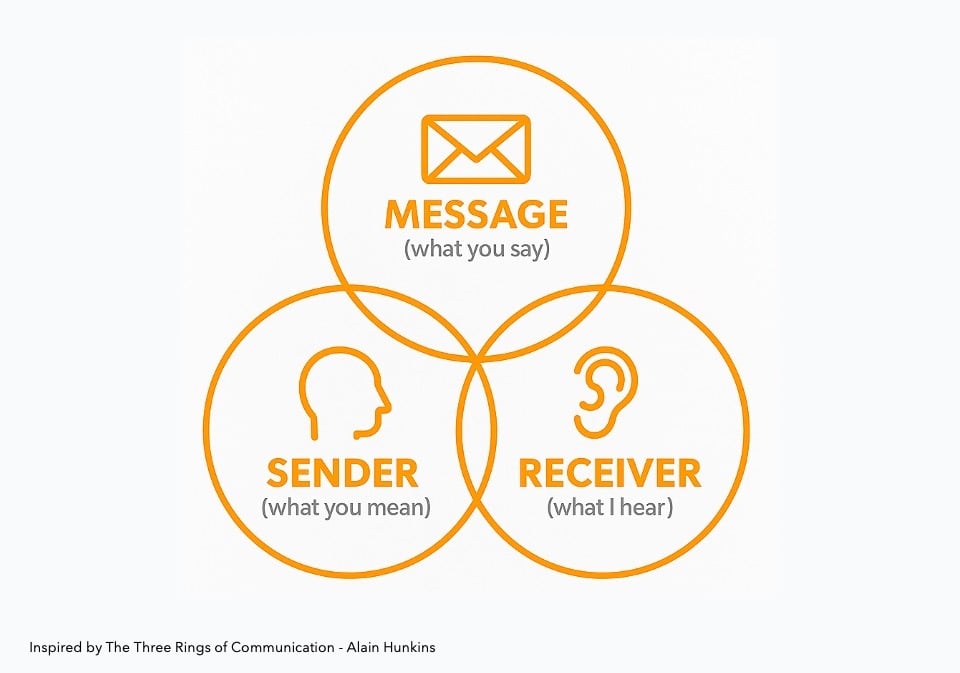In our world, communication is everything. It’s how teams align, how leaders inspire, and how brands build culture from the inside out.
Yet, so often, communication fails — not because people don’t care, but because meaning gets lost somewhere between sender and receiver.
Leadership expert Alain Hunkins, writing for Forbes, describes this brilliantly through his idea of the Three Rings of Communication:
- What’s said.
- What’s heard.
- What’s understood.
And it’s in those gaps between each ring that so much confusion — and cost — lives.
The illusion of communication
We all know the feeling.
You’ve shared the update, briefed the team, or presented the strategy — and assumed the message has landed.
But weeks later, outcomes tell a different story. The project didn’t move. The tone didn’t match. The team’s focus drifted.
It’s not that people weren’t listening. It’s that what was said wasn’t what was heard, and what was heard wasn’t what was understood.
As Alain Hunkins puts it, we often mistake “message sent” for “message received.”
And in large organisations — especially those with multiple locations, layers and audiences — those gaps multiply fast.
Where internal comms often stumble
In our work at We Are Acuity, we see these “ring gaps” appear time and again:
Between HQ and local teams, where strategy loses context.
Between managers and frontline staff, where tone or urgency gets diluted.
Between brand and culture, where internal and external voices don’t align.
The result?
Mixed messages, missed opportunities and, often, the perception that comms “just don’t work.”
But here’s the thing: internal comms aren’t broken — they’re just misaligned.
And fixing them doesn’t mean sending more messages.
It means closing the gap between what’s said, what’s heard and what’s understood.
Closing the gap: from information to insight
There are three practical shifts we often recommend:
1. Start with empathy, not agenda.
Ask yourself how your message feels from the listener’s point of view. What do they need, not what do you need to say?
2. Focus on clarity, not volume.
One clear, simple, well-timed message beats a dozen fragmented updates.
3. Invite response, not just reaction.
True communication is two-way. Build feedback loops — surveys, team huddles, local champions — so you can hear what’s actually landing.
When you do this consistently, those three rings begin to align — and communication becomes connection.
From insight to action
At We Are Acuity, we’ve seen how small changes in internal comms can drive huge shifts in performance, culture and retention.
That’s why on 21 October, we’re hosting our webinar “Internal Comms — Your Brand on the Inside”, with comms expert Kate Goodman and Andy Martin, Head of Digital Learning at Stellantis.
We’ll explore how to take communication from fragmented to focused — and make sure what’s said is what’s understood.
Final thought
If 86% of employees and executives say poor communication leads to failure, the question isn’t whether we can afford to improve comms — it’s how soon we start.
Because clarity isn’t a soft skill.
It’s the hard edge of performance.











